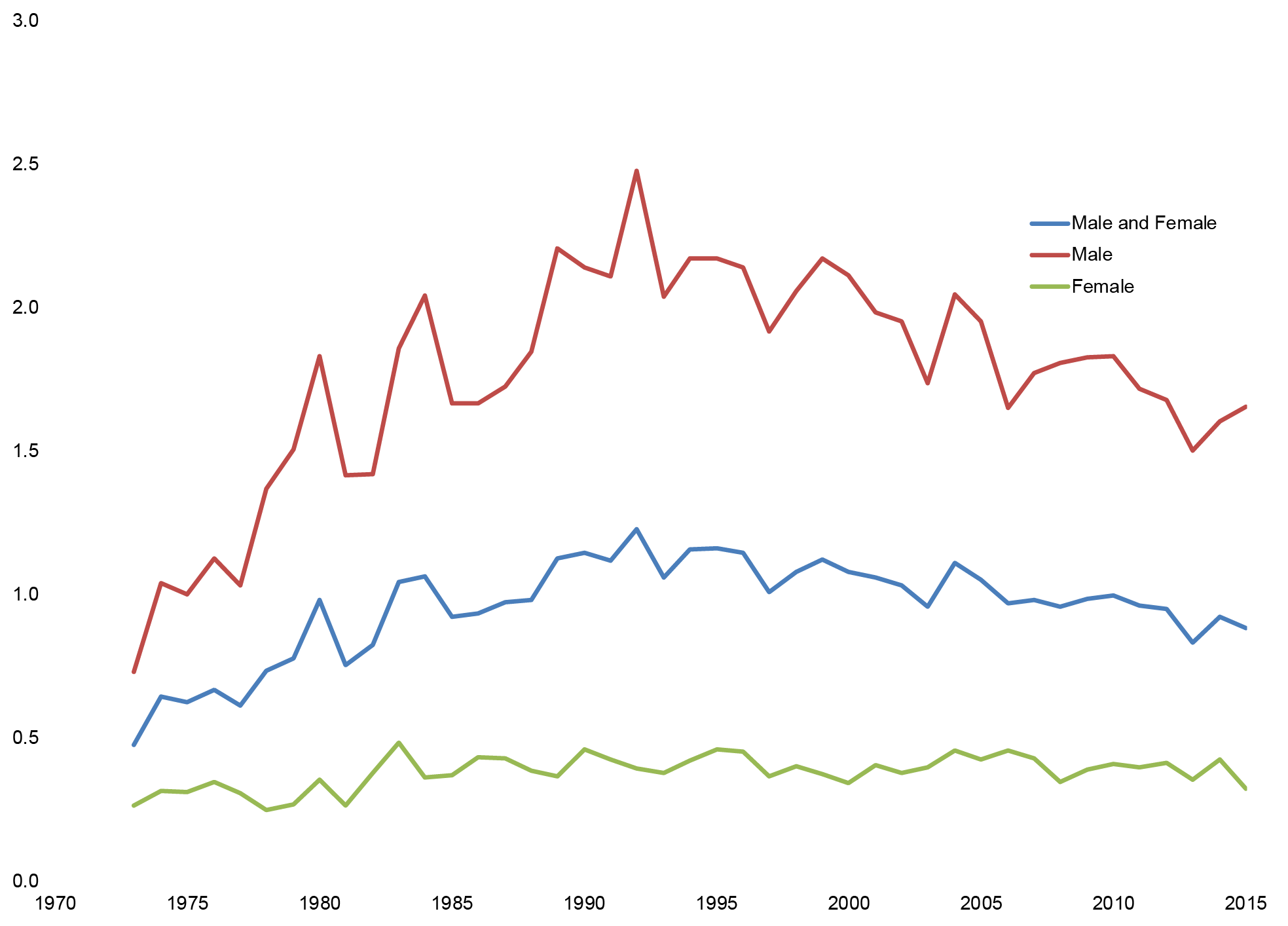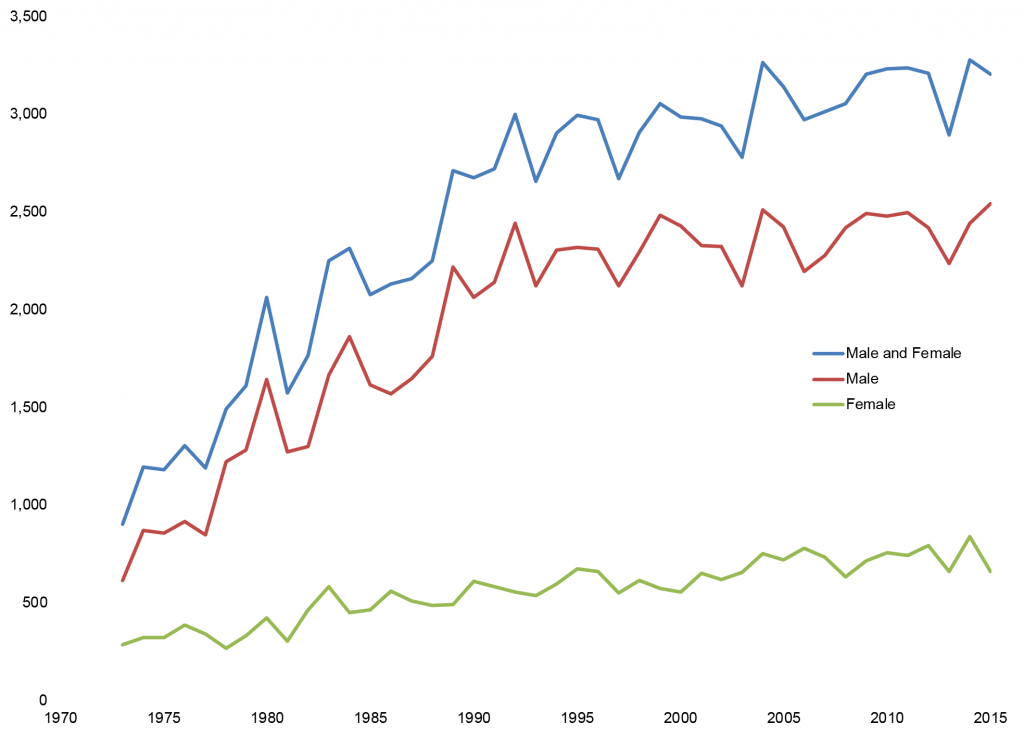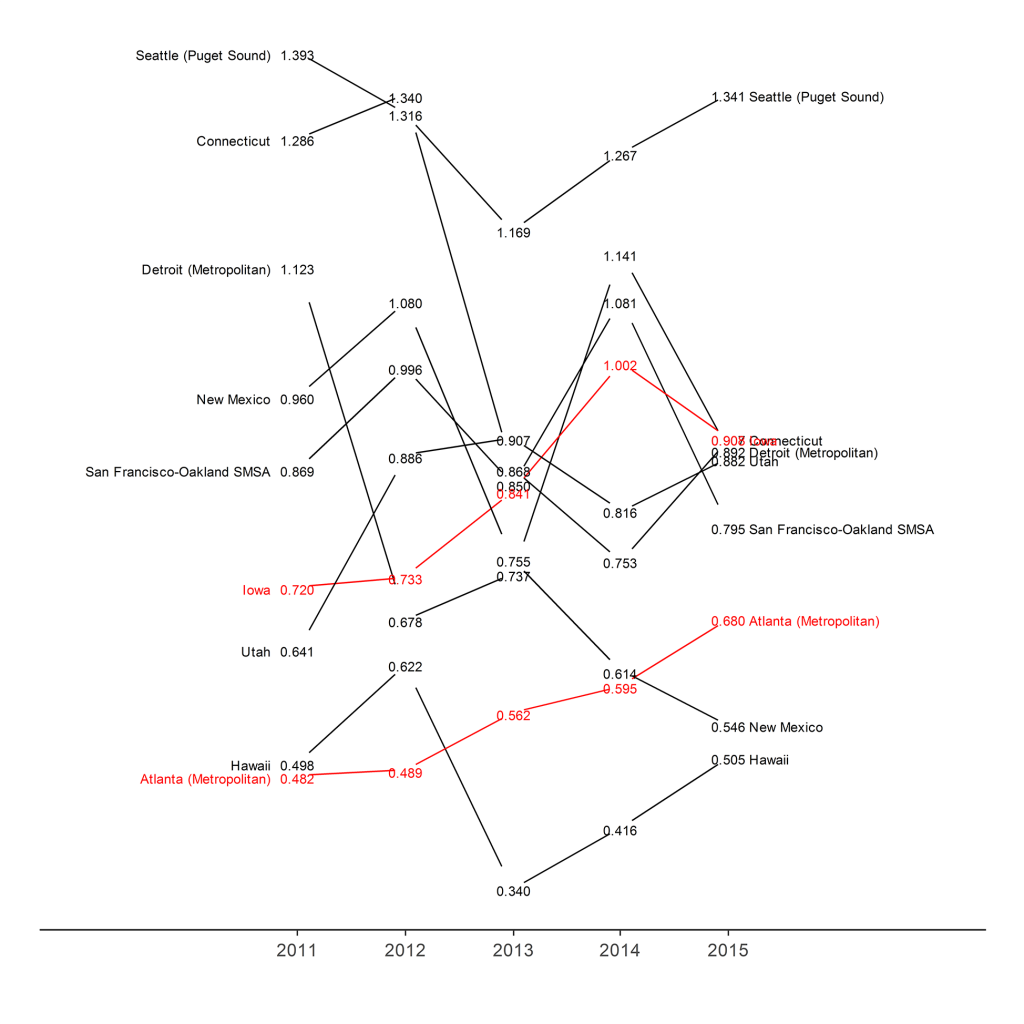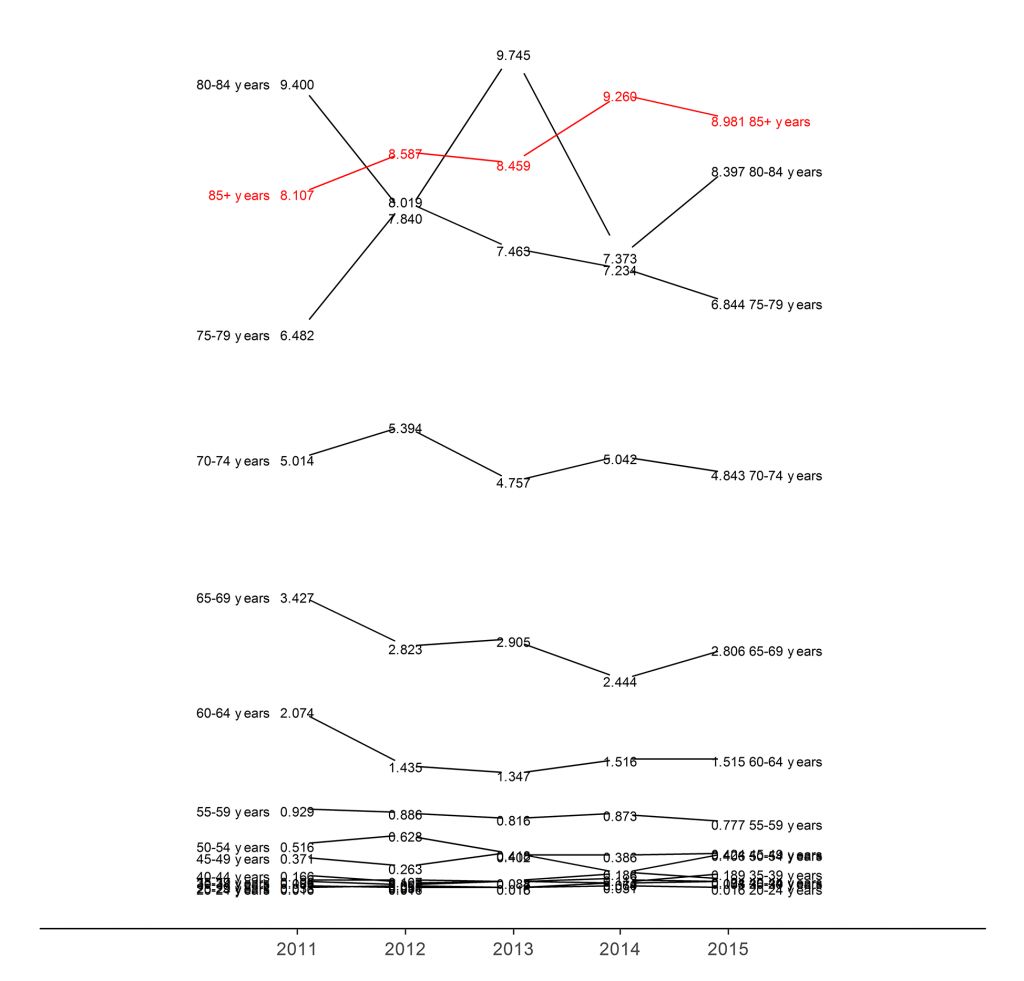- April 25, 2018
Jorge Sirgo, Vice President in Litigation & Expert Services
The latest annual federal data on mesothelioma diagnoses in the United States became available on April 16, 2018. The data reports on rates of mesothelioma diagnoses during 2015, as determined from “cancer registries” from a sampling of some hospitals in the United States.
The data arises from the Surveillance, Epidemiology, and End Results (“SEER”) Program of the National Cancer Institute. The report is more technically described as the 1973-2015 SEER Research Incidence data (November 2017 submission). SEER collects data on cancer cases from various locations and sources throughout the United States. Data collection began in 1973 with a limited amount of registries and continues to expand to include even more areas and demographics today.
The data in 2015 reflect moderate changes from 2014, but appear to support the long-run trends previously identified in the data.
The SEER 9 database (the database with registry information collected since 1973) shows that the overall rate of mesothelioma diagnoses has been falling since the early 1990s. The rate trend differs, however, by sex. While the rate of male mesothelioma diagnoses has been falling since the early 1990s, the rate of female mesothelioma diagnoses appears to remain constant. See the figure below to review the trends.
SEER 9 Mesothelioma Diagnoses (per 100,000)
Overall, the data indicate the rate of mesothelioma diagnoses decreased from 0.924 in 2014 to 0.881 in 2015. The rate of male mesothelioma diagnoses increased from 1.605 in 2014 to 1.653 in 2015. The rate of female mesothelioma diagnoses decreased from 0.425 in 2014 to 0.324 in 2015. Note that the changes in the point estimates all have confidence intervals that overlap each other so they are not statistically different at 95% confidence.
The rates above are used to extrapolate from the sample to an estimate of the population of mesothelioma diagnoses. The SEER incidence data are represented below in the following chart:
SEER 9 Mesothelioma Diagnoses
Overall, the data indicate the estimated number of mesothelioma diagnoses decreased from 3,279 in 2014 to 3,205 in 2015. Estimated male mesothelioma diagnoses increased from 2,442 in 2014 to 2,542 in 2015. Estimated female mesothelioma diagnoses decreased from 837 in 2014 to 663 in 2015. The data does not distinguish between pleural and peritoneal mesothelioma diagnoses. The declining trend in rates noted above for overall and male diagnoses can be translated into potentially declining incidence. However, the relatively constant rate of female mesothelioma diagnoses (combined with increasing population, longevity, etc.) appear to show increasing female incidence of mesothelioma diagnoses.The changes in the rates and point estimates can be examined further by drilling down to the registry level. The following slopegraph shows the rate of all (both male and female) mesothelioma diagnoses over the past five years by SEER registry.
SEER 9 Mesothelioma Diagnoses (per 100,000) by SEER 9 Registry
The rates in Atlanta and Iowa appear to be trending upward while the rates in the other registries are stable and/or decreasing. The rates observed in the Seattle registry are consistently the greatest.
The changes in the rates and point estimates can also be examined further by drilling down to the age level. The following slopegraph shows the rate of all (both male and female) mesothelioma diagnoses over the past five years by age cohort.
SEER 9 Mesothelioma Diagnoses (per 100,000) by Age Cohort
The rates of mesothelioma appear consistently stratified and stable by age cohort. There does not appear to be any trending by age cohort either aside from the slightly rising trend for individuals older than 85 years.





